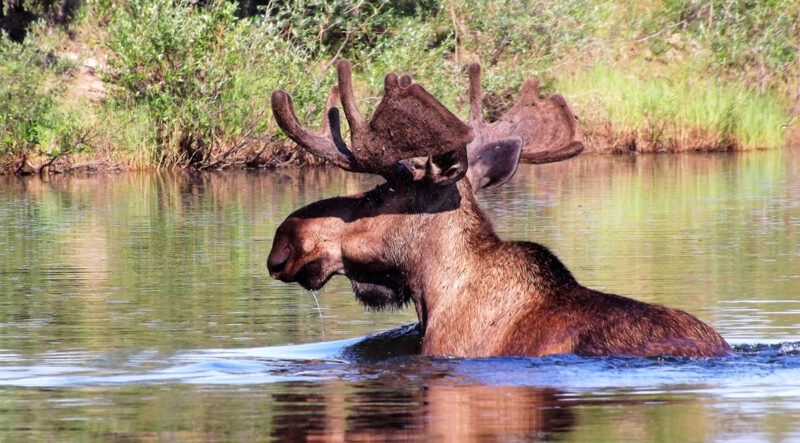The Merriam-Webster dictionary defines a chimera as an imaginary monster compounded of incongruous parts.
It seems the perfect term to use when discussing the strange creatures our ancestors first bore witness to when they were exploring the world. Imagine the first time an explorer crossed paths with a tapir, capybara, kangaroo, giant anteater, or even a thylacine.
It’s hard to believe that a lot of the monsters our ancestors reportedly saw in the wild were not fanciful creations. (Or in some instances ruses, like Jenny Hanivers.)
After reading Adam Shoalts’ The Whisper on the Night Wind, I was thrown back into my thoughts; that we as humans explain new things in ways that are within our grasp.
That means combining incongruous parts from other animals to explain another “new” animal. That explains why so many of our sea serpents have heads like horses. Any ungulate swimming across a body of water will spark imaginations with talk of kelpies or even Ogopogo.
Shoalts’ expedition across Labrador to investigate the Traverspine Gorilla revealed how folkloric chimeras are created through a lack of knowledge, means of communication and a superstitious mind. When the only book in a trapper’s lodgings is the family Bible, you know full well the supernatural is going to be invoked when you don’t know what a moose or a wolverine is.
That’s Shoalts’ explanation for what trappers, settlers and Indigenous people witnessed during a spate of bizarre sightings in the 19th and early 20th centuries. But those people were not aware of other species that were outside their own neighbourhood. It’s commonplace to look at moose tracks as a 19th-century trapper who is outside of the moose’s natural habitat and think of Devil or Windigo.
The holistic approach to rare or out-of-place animals is refreshing and should be the direction when looking at all cryptids, right from the Beast of Bodmin Moor to the Goat Man of Old Alton Bridge.
Every so often there are sightings of large cats in Southern Ontario, but they can be explained away as a badger, coyote or maybe in the rarest of happenstances a straying mountain lion — or lost “pet”. Ravines are abundant in the Greater Toronto Area, offering a natural highway for critters of all shapes and sizes to reach Lake Ontario.
We need to look at all possible cryptid sightings within that objective scope. I’m reminded of the escaped capybaras from the High Park Zoo, and maybe those who saw one of them, on the lam, thought it was a mutant beaver or some other cryptid.
Our world is changing constantly as we experience new things through our five senses. Sometimes our senses deceive us, and we lapse into using what we know to explain something we don’t. It’s a mental reflex. One could argue that it’s a survival mechanism.
When we take a step back and reassess an uncanny experience, sometimes the most obvious answers are right under our noses. Thank our Canadian animal friends the moose and wolverine for that.
Photo courtesy of Adam Shoalts

